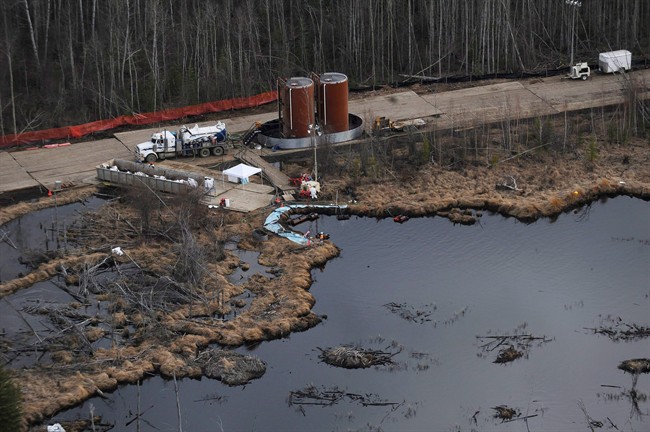The Alberta Energy Regulator, the agency in charge of monitoring Alberta’s energy industry and enforcing provincial regulations, has made more information on its activities available online.

In principle this is great, and comes after years of calls for more proactive disclosure and transparency from critics and journalists (Global News included).
But how informative is it, really?
A web application called the “Compliance Dashboard” includes information on recent incidents such as pipeline breaks and well leaks, ongoing investigations into oil companies, and incidents of industry non-compliance with provincial regulations.
Here are some of my first impressions:
It’s definitely a big step for the regulator to have the information all publicly available in one place. Generally, the system is easy to use. The databases are searchable and the information can be downloaded in spreadsheet form.
(One caveat: At the moment, the downloaded data only shows a summary of the incident, not all the information that displays in the expanded incident tab. Regulator spokesperson Cara Tobin says this is a glitch, that the intent was to make all the information downloadable and she’s looking into why that’s not working.)
The database also makes basic information on investigations and compliance actions much more accessible – previously it was only obtainable in a pdf report or through freedom of information requests.
Public information on industrial accidents has definitely been expanding over the past few years. When Global News conducted an investigation into oil spills in Alberta in 2013, the only information available online was news releases relating to particularly big incidents – often after they had already made the news. In June 2013, the agency began releasing select information in a downloadable spreadsheet. This latest tool makes it even easier to spot new incidents at a glance.
It’s still incomplete, though. According to the website, the incidents in the database include:
• a reportable release that involves hydrogen sulphide (H2S);
• a reportable release that affects a water body, whether on or off lease; or
• a reportable release of hydrocarbon or produced water (this includes releases that migrate off lease, including on pipeline right-of-ways).
But this excludes many incidents that would be reported to the regulator: fires, for example. This brochure shows a summary of all incidents companies have to report.
But the average person may not know this: Although the website spells out what’s in the data, it doesn’t indicate what’s been left out.
The location data is also still a bit vague, making it largely useless for mapping. And the incidents data only goes back to June 2013. (You can download data for incidents from January 1, 1975 to February 4, 2013 from the Global News website here.)
One last thing: In the news release announcing the new data dashboard, Regulator CEO Jim Ellis is quoted as saying, “This information has always been available through the FOIP (freedom of information and privacy) process.”
From my experience, this isn’t true. I filed a FOIP request for incident data to the AER’s predecessor, the Energy Resources Conservation Board, in January 2013. The Board denied my request after determining the government is actually selling that information. We ended up buying it for $367. The full database is still listed for sale.
All in all, however, the new website is a vast improvement in making the enforcement of Alberta’s oil industry more visible to the public. We’ll be checking back often.



Comments